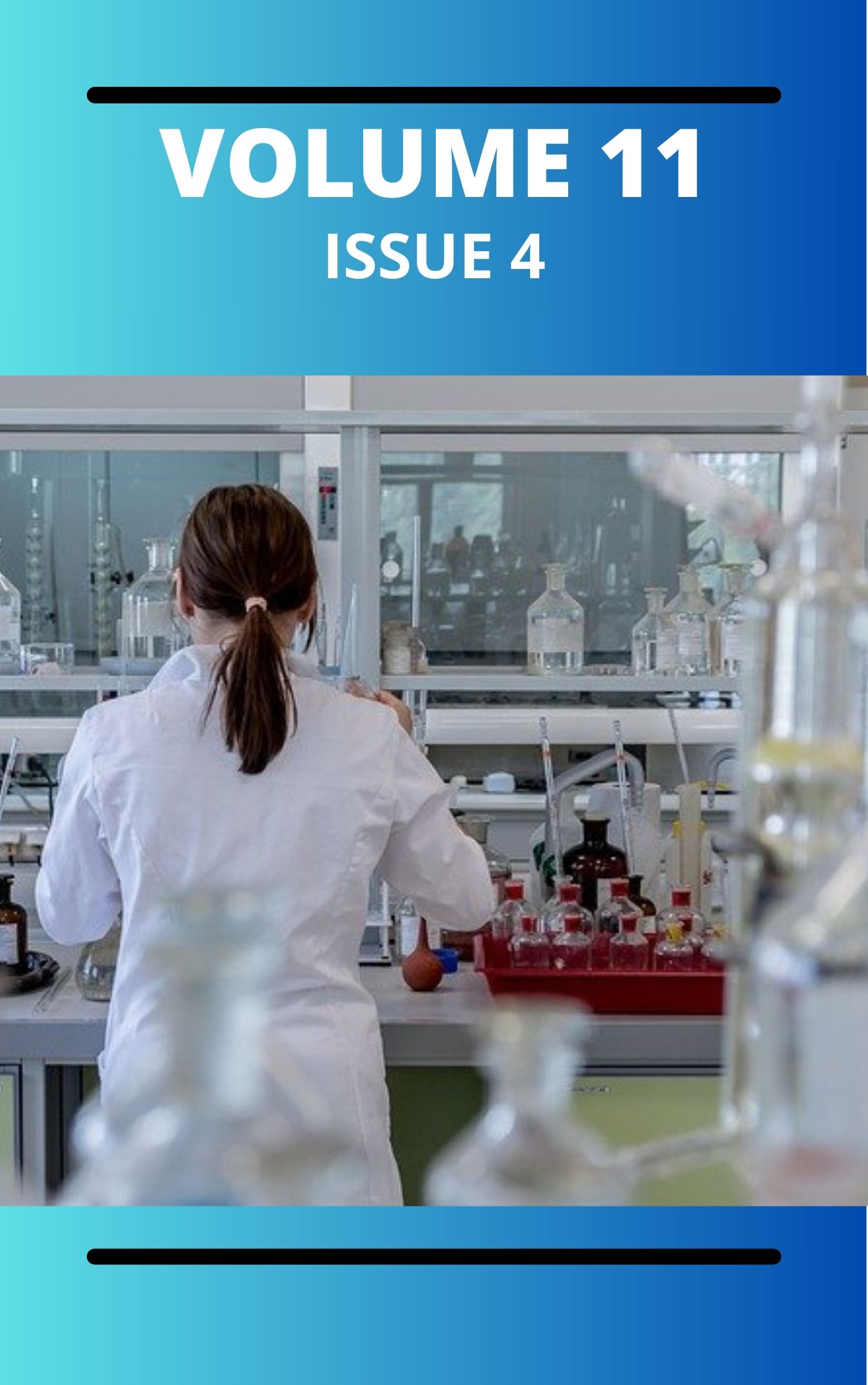Exploration of Vitreous Biochemical Markers for Postmortem Discrimination of Carbon Monoxide Toxicity: Insights from Animal Model
DOI:
https://doi.org/10.4314/6f77as13Keywords:
Autopsy, Disguise, Discriminate, Carbon monoxide toxicity, CourtAbstract
This study investigates the potential of postmortem vitreous biochemical parameters as biomarkers for distinguishing between drowning and deaths disguised as drowning. The purpose of the study is to explore the discriminatory power of selected vitreous biochemical parameters in forensic autopsy to resolve disputed causes of death. The study aims to assess and compare the postmortem levels of sodium, potassium, chloride, calcium, total protein, albumin, globulin, glucose, cholesterol, triglycerides, urea, creatinine, uric acid, creatine kinase, and lactate dehydrogenase in rabbits that died from different causes. Using a completely randomized block design (CRBD), 96 male rabbits were divided into four groups: two treatment groups (one for drowning and one for strangulation followed by drowning) and two control groups. After a 24-hour postmortem interval, vitreous humor samples were analyzed using ion-selective electrode and standard biochemical methods.The results showed significant differences (P≤0.05) in the biochemical parameters between the drowning and strangulation groups. The postmortem levels of sodium in the drowning group were 145 ± 5 mmol/L, compared to 133 ± 4 mmol/L in the strangulation group. Potassium levels were 4.8 ± 0.5 mmol/L in the drowning group, significantly higher than 3.2 ± 0.4 mmol/L in the strangulation group. Chloride levels were 105 ± 7 mmol/L in the drowning group, while the strangulation group had 90 ± 6 mmol/L. Calcium levels were 2.5 ± 0.2 mmol/L in the drowning group, compared to 1.8 ± 0.3 mmol/L in the strangulation group. Total protein concentrations were 72 ± 3 g/L in the drowning group and 55 ± 4 g/L in the strangulation group. Creatinine levels were 72 ± 8 µmol/L in the drowning group, higher than 48 ± 7 µmol/L in the strangulation group. Creatine kinase and lactate dehydrogenase levels in the drowning group were 120 ± 10 U/L and 420 ± 30 U/L, respectively, whereas in the strangulation group, they were 85 ± 8 U/L and 300 ± 25 U/L.These biochemical markers were identified as potential biomarkers for distinguishing between deaths caused by actual drowning and those disguised as drowning. The study recommends the further development and validation of vitreous biochemical analysis as a reliable, non-invasive alternative to blood analysis for forensic investigations, particularly in cases of suspected drowning-related homicides. This approach holds promise for improving the accuracy of postmortem diagnostics and enhancing the justice system’s ability to resolve controversial death cases.
Downloads
Published
Issue
Section
Most read articles by the same author(s)
- Ikimi, Charles German, Umeoguaju, Francis Uchenna, Ononamadu, Chimaobi James, Exploration of Vitreous Biochemical Markers for Postmortem Discrimination of Carbon Monoxide Toxicity: Insights from Animal Model , Communication In Physical Sciences: Vol. 11 No. 4 (2024): VOLUME 11 ISSUE 4
Similar Articles
- Elizabeth Chinyere Nwaokorongwu , Greatman Mkpuruoma Onwunyiriuwa, Ajike Eziyi Emea , Heteroatom-Doped Carbon Allotropes in Corrosion Protection , Communication In Physical Sciences: Vol. 10 No. 1 (2023): VOLUME 10 ISSUE 1
- Gideon Wyasu, Batch adsorption of Mn2+ and Co3+ from Refinery wastewater using activated carbon from epicarp of Detarium microcarpum and Balanites aegyptiaca shells , Communication In Physical Sciences: Vol. 3 No. 1 (2018): VOLUME 3 ISSUE 1
- Onuchi Marygem Mac-Kalunta, Chinedu Ifeanyi Nwankwo, Anslem Kenechukwu Nwokedi, Uzoefuna Chima Casmir, Acute Toxicity and Hypolipidemic Study of Extracts of Brillantaisia Owariensis and Andrographis Paniculata Leaf , Communication In Physical Sciences: Vol. 9 No. 4 (2023): VOLUME 9 ISSUE 4
- Stephen Eyije Abechi, Casmir Emmanuel Gimba , Adamu Uzairu, Odike Jotham Ocholi, Comparative Analysis of Methods of Activated Carbon Surface Area Determination , Communication In Physical Sciences: Vol. 10 No. 1 (2023): VOLUME 10 ISSUE 1
- Onyinyechi Uloma Akoh , Henry Nnanyere Nwigw, Stella Mbanyeaku Ufearoh , Evaluation of Acute Toxicity and Antidiarrheal Activity of Hunteria umbellata Mesocarp Extract: Preclinical Study , Communication In Physical Sciences: Vol. 11 No. 2 (2024): VOLUME 11 ISSUE 2
- Joy N. Egbucha, Eze C. Victor, Nlemchukwu N.C. Benjamin, Obikee M. Caroline, Joseph N. Aniezi, Ifeanyi E. Otuokere, Phytochemical, Anti-inflammatory, Antioxidant, Toxicity and Antimicrobial Activities of Sarcophrynium brachystachys (Benth) K. Shum Leaves , Communication In Physical Sciences: Vol. 11 No. 2 (2024): VOLUME 11 ISSUE 2
- Gideon Wyasu, Production of Activated carbon derived from Banana peel for the removal of Cd2+ and Cr6+ in Brewery wastewater , Communication In Physical Sciences: Vol. 3 No. 1 (2018): VOLUME 3 ISSUE 1
- Dorathy Edet Etim, Nnamso Effiong Essien, Aniebiet Mmekuwem Essien, Impacts of Acute Toxicity of Heavy Metals (Hg And Pb) On Liver Enzymes of Normal Albino Wistar Rats , Communication In Physical Sciences: Vol. 11 No. 4 (2024): VOLUME 11 ISSUE 4
- Nathaniel Atamas Bahago, Gideon Wyasu, Sorption Studies of Methylene Blue Using Activated Carbon Produced from Rice Husk , Communication In Physical Sciences: Vol. 3 No. 1 (2018): VOLUME 3 ISSUE 1
- Dorathy Edet Etim, Nnamso Effiong Essien, Aniebiet Mmekuwem Essien, Impacts of Acute Toxicity of Heavy Metals (Hg And Pb) On Liver Enzymes of Normal Albino Wistar Rats , Communication In Physical Sciences: Vol. 11 No. 4 (2024): VOLUME 11 ISSUE 4
You may also start an advanced similarity search for this article.




